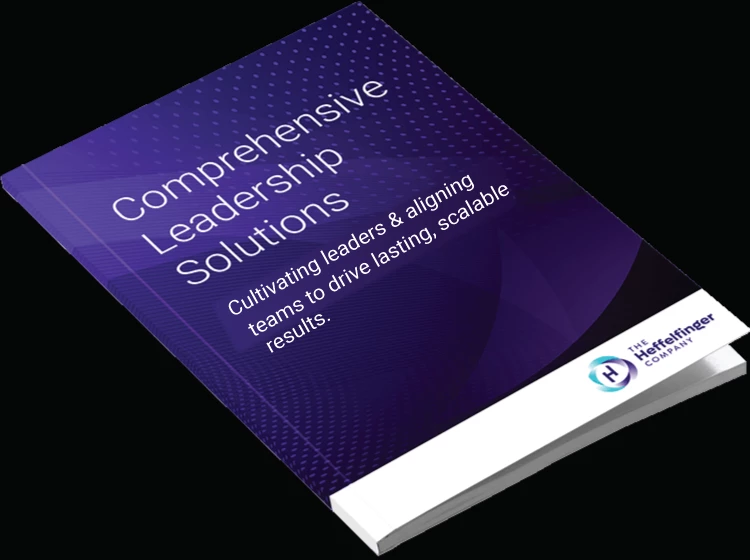“Good strategy is the effective application of your organization’s strengths against your rivals’ weaknesses. Unfortunately, many people misunderstand what makes good strategy and end up publishing vague statements of lofty but directionless goals instead of actionable, focused plans that will propel their organization to success.”
-Richard Rumelt, one of the world’s foremost thinkers on strategy and author of Good Strategy Bad Strategy.
Between remote and hybrid work changes, layoffs, and the newly implemented widespread use of AI, many leaders and employees feel like their companies have been in a constant state of change since the pandemic. And for good reason; the pace of transformation has been relentless and organizations have been forced to adapt faster than before in order to succeed. As 2026 approaches, this climate makes strategic planning more critical than ever. Taking time to clarify direction, align priorities, and prepare for what’s ahead is a necessity for staying competitive and resilient in an uncertain business landscape.
As avid sailors, James and Lori know that on the ocean as in business, headwinds often come from the very direction you want to go, but you can’t sail straight into them. You have to tack, zigzagging strategically, adjusting your sails and course to make forward progress despite resistance. Each adjustment may feel like a sidestep, but it’s a deliberate move that keeps you on track toward your goal. Strategic planning should work the same way by giving leaders the tools and awareness to adapt when conditions change while maintaining forward motion.
The companies that succeed in the next few years won’t necessarily be the biggest, but rather the most agile. They’ll be able to read the wind, adapt their strategies, and move decisively toward their vision while others hesitate.
Is Your Organization Ready for a Strong 2026?
As we approach 2026, many organizations are still regaining momentum lost in the post-COVID years. Business leaders face a unique mix of challenges: market volatility, talent shortages, generational gaps, and shifting employee expectations—especially between employers and Gen Z.
It’s not unusual to hear leaders admit that while they have goals, they’re unsure about the path forward. Meanwhile, individuals are working hard, but not always in alignment with their teammates or the organization’s goals. Team alignment is crucial for transforming good intentions into measurable results and getting employees on board with objectives that will drive the organization forward.
At the same time, generational shifts in the workforce are changing how alignment works. One thing’s for sure: Gen Z isn’t going to fit into the old model. As Gen Z continues to enter the workforce, leaders will need to incorporate their perspectives into strategic planning to maintain engagement and drive results.
Don’t get left behind. Embrace input from cross-generational groups to discuss and shape your organization’s vision and create an effective strategic plan.
What Is Strategic Planning, and Why Does It Matter?
Strategic planning, sometimes called corporate planning, is a process whereby an organization defines its future direction and makes key decisions about resource allocation to achieve its goals. A major benefit of strategic planning is the ability to execute at speed because your senior team (and employees) are aligned on the key priorities of your organization and understand how you will get there.
A good strategy sets major goals, identifies the actions required to reach them and then assigns responsibilities and creates timelines. It should also take into account the external environment and internal capabilities in an attempt to anticipate and create a plan to overcome challenges that may arise.
Why Speed Matters Now More Than Ever
The post-COVID business landscape rewards speed. According to McKinsey, fast organizations outperform others across three key metrics: profitability, resilience, and growth. Yet, many companies are still constrained by legacy systems, siloed departments, and outdated decision-making structures.
When organizations lack clarity and alignment, they move slowly because every decision feels heavy. Leaders debate priorities, teams second-guess direction, and execution drags. Conversely, when everyone understands the strategy, speed follows naturally. Teams don’t waste time guessing because they know what’s most important and how their work fits into the bigger picture.
A Planview global benchmark study found that top-performing companies—those that execute strategy with both speed and quality—share a few key practices:
- They build replanning into operations, not just annual cycles.
- They leverage lean and agile practices across the enterprise.
- They use accurate, real-time data to make fast, high-quality decisions.
- They invest in technology that creates a clear line of sight from strategy to execution.
Simply put: Speed comes from alignment.
The Cost of Standing Still
Leaders often respond to uncertainty by hunkering down. They cut costs, implement hiring freezes, and wait for the storm to pass. But this is often a big mistake.
Companies that are not moving forward are often holding on to legacy business processes, practices, and systems that:
- Inhibit flexibility
- Dilute strategy
- Hinder execution
- Prevent effective, fast decision-making
The practical consequences of failing to adapt strategy execution at speed are even worse:
- Huge declines in growth and profitability
- Lost opportunities to faster competitors
- Decreased customer retention
- Erosion of employee trust and engagement








